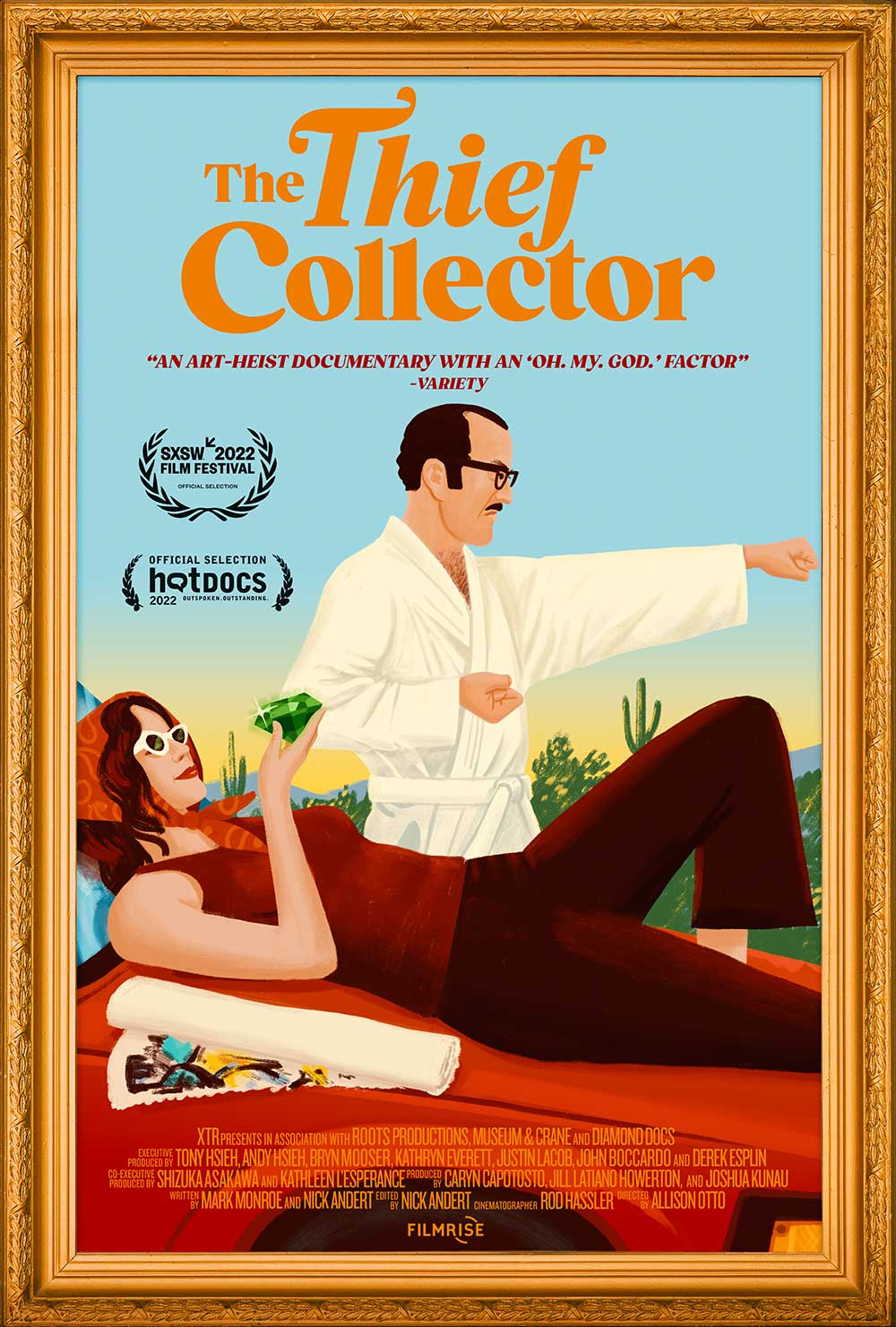Eye For Film >> Movies >> The Thief Collector (2022) Film Review
The Thief Collector
Reviewed by: Jennie Kermode

To be a film critic is to be continually on the receiving end of interesting and unusual stories – not just in the films one reviews but in all the pitches one can’t find time to follow up on – yet every now and again, one still encounters a story which leaves one sitting in stunned silence, temporarily bereft of the capacity to process anything else. The Thief Collector has the intriguing premise of explaining how an ordinary couple from Cliff, New Mexico, came to have a $160m painting hanging in their bedroom – but that is only the tip of the iceberg. What subsequently emerges is a much bigger story which will leave you wondering about your own neighbours and all the strange things which might be happening in proximity to any one of us, hiding in plain sight.
It opens with a quotation from H Jerome Aster: “To own wealth is to be possessed by it.” Who is H Jerome Aster? We’re getting to that. First, meet George and Susan. They inhabit the beguiling yet cosy world of pulp fiction. They are always well dressed and charming, with bright eyes and flashing smiles. They could not be more deeply in love with one another. Together, they pull off a string of crimes, getting their kicks from putting themselves in danger. “They saw themselves as masters of victimless crimes,” Aster writes.

Remember that word: ‘victimless’.
Meet Jerry – that is, Jerome in daily life. He’s a talented but not particularly successful jazz musician. His beautiful wife Rita, a former model, now works as a schoolteacher and therapist. Everybody who knows them likes them. Their nephews and nieces are awed by how cool they are, how glamorous, with amazing stories from the two or three trips per year which they take to exotic destinations. Occasionally people wonder how they manage to afford that on a teacher’s salary, but nobody really worries about it – why would they? It wasn’t until Jerry and Rita were dead that anything more unusual came to light about them – and then Jerry’s book of short stories, including the one about George and Susan, began to seem like something else entirely.
The aforementioned painting, Woman-Ochre by Willem de Kooning, was the highlight of the collection at the University of Arizona’s Museum of Art in Tucson, donated to it in the Sixties. The staff were distraught when, one day, somebody simply razored it out of its frame and carried it off. Amongst the participants here is a police officer who says that the case haunted him throughout his career. When the three owners of a Silver City, New Mexico antique store found in hanging in Jerry and Rita’s bedroom, they didn’t think it was anything special at first (the couple’s nephew says that it reminds him of paintings by bonobos), but within ten minutes of them hanging it in their store, they had been offered $200,000 for it by a man who, despite very much wanting it for himself, had the decency to tell them that they should get it professionally valued.
It’s the garden of Jerry and Rita’s house which grabs one’s attention first. It’s all tiled pyramids, obelisks, busts of famous figures atop stone cairns. Inside, a myriad pictures of the couple dot the walls, along with over 75 paintings, most of the by Jerry and pretty awful. How did Woman-Ochre come to be there? They stole it, of course, in an audacious manner which could come straight from the pages of an Elmore Leonard novel – but the more we learn about them, the more obvious it becomes that it was not the only thing they stole. As layer after layer of the story unfolds, neighbours and family members are forced to look at them in a different light.
At first, despite the fact that their crimes actually did have victims, and despite the mounting horror of some of those who were close to them, it’s quite possible to root for these two outlaws who were born into humble circumstances but found a way to live life to the max. One wild story after another makes them seem like exciting anti-heroes. But then you might start to wonder: if some of the stories in Jerry’s book are thinly disguised versions of reality, what about the others? Are they all true? Even the one which involves murder?
What begins as a spirited romp goes to dark places before it’s done, and reminds us of the wreckage which this sort of spree inevitably leaves in its wake, of the ugly reality of what one might ultimately be forced to acknowledge as sociopathy. Various participants in the film frantically search for a moral, for a way to make themselves believe that Jerry and Rita were not really happy with their lives, yet – despite that initial quote – pretty much everything suggests that they were. Sometimes crime does pay. Sometimes people do get away with it. Still...
Charmingly kitsch reconstructions and a shooting style which borrows heavily from Sixties espionage thrillers make this a visual delight and remind us how heavily promoted the lifestyle which the couple chose was during their heyday. This contrasts strongly with the realities of life in a small, crowded antique shop – and yet long after Jerry and Rita are dead, the antique shop owners who blew the story open when they could have profited from the painting instead, who just wanted it to go back to the people who owned it, are smiling, living their own best lives, adored by customers who know what real treasure looks like.
Reviewed on: 16 May 2023














